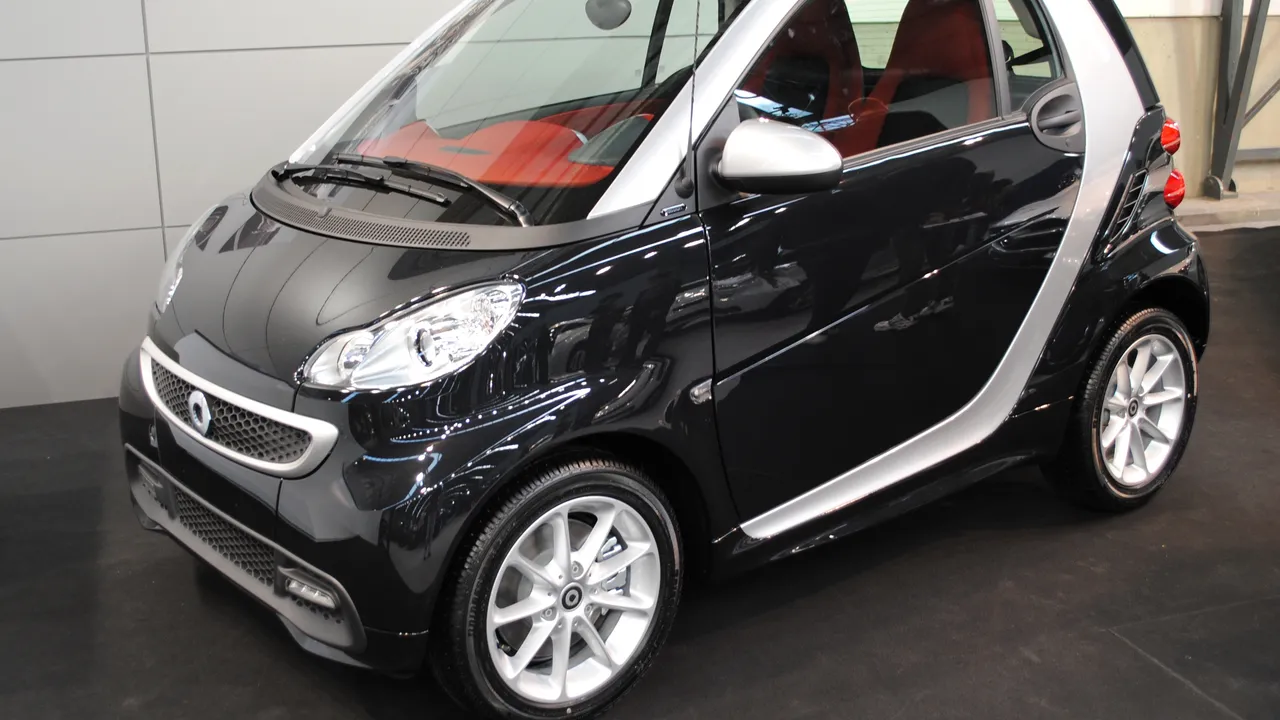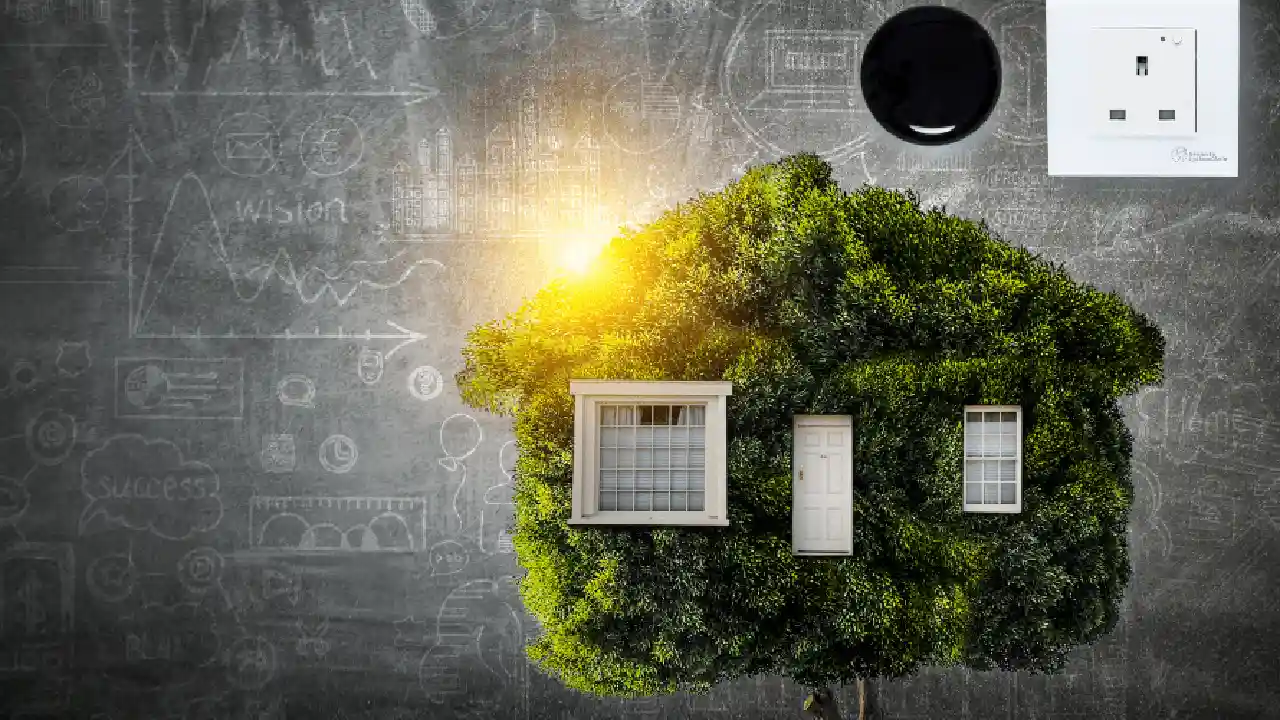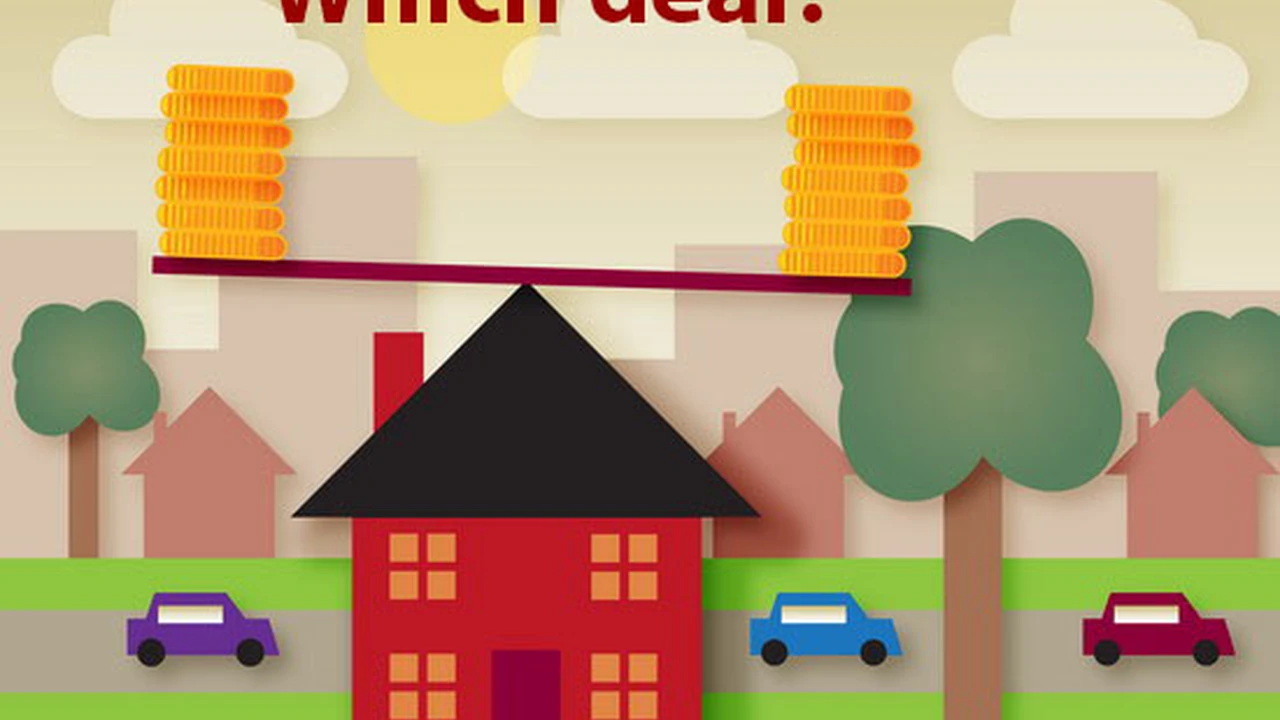Best Smart Home Systems for Caregivers
Explore integrated smart home systems that assist caregivers in monitoring and supporting seniors remotely.

Explore integrated smart home systems that assist caregivers in monitoring and supporting seniors remotely. As our loved ones age, ensuring their safety and well-being becomes a top priority. For many, this means taking on the role of a caregiver, which can be incredibly rewarding but also demanding. Fortunately, technology has stepped up to offer a helping hand. Smart home systems are no longer just about convenience; they've evolved into powerful tools that can significantly ease the burden on caregivers, providing peace of mind and enhancing the quality of life for seniors living independently.
Best Smart Home Systems for Caregivers Enhancing Senior Support
Caring for an aging parent or loved one often involves a delicate balance of providing support while respecting their independence. Smart home technology offers a revolutionary approach to this challenge, allowing caregivers to monitor and assist from a distance, intervene when necessary, and ensure a safe living environment. This article dives deep into the best integrated smart home systems designed specifically with caregivers in mind, offering practical insights, product comparisons, and real-world scenarios.
Understanding Smart Home Systems for Senior Care What Caregivers Need to Know
Before we delve into specific products, it's crucial to understand what constitutes a 'smart home system' in the context of senior care. These aren't just individual gadgets; they are interconnected networks of devices that communicate with each other and often with a central hub or app. For caregivers, the key functionalities include remote monitoring, emergency alerts, automation, and communication tools. The goal is to create an environment where seniors can maintain their autonomy while caregivers have the necessary insights and control to ensure their safety and well-being.
Think about it: instead of constantly calling or visiting, a smart system can alert you if your loved one hasn't opened the fridge all day, if there's an unusual movement pattern, or if a door has been left ajar. This proactive approach can prevent minor issues from escalating into major problems, giving both seniors and caregivers greater peace of mind.
Key Features to Look for in Caregiver Smart Home Systems Prioritizing Safety and Convenience
When evaluating smart home systems for senior care, several features stand out as particularly important:
- Remote Monitoring Capabilities: This includes motion sensors, door/window sensors, bed occupancy sensors, and even smart cameras (with privacy considerations). The ability to check in remotely without being intrusive is invaluable.
- Emergency Alert Systems: Integration with personal emergency response systems (PERS) or direct alerts to caregivers in case of falls, smoke detection, or unusual activity.
- Medication Management Reminders: Smart dispensers or apps that remind seniors to take their medication and alert caregivers if a dose is missed.
- Environmental Control: Smart thermostats, lighting, and blinds that can be adjusted remotely for comfort and energy efficiency, or even automated based on routines.
- Communication Tools: Two-way audio/video communication through smart displays or dedicated devices, making it easy for seniors to connect with caregivers and family.
- Activity Tracking and Pattern Recognition: Systems that learn daily routines and alert caregivers to significant deviations, which could indicate a problem.
- Ease of Use for Seniors: The interface for the senior should be simple, intuitive, and ideally voice-activated to minimize confusion.
- Scalability and Integration: The ability to add more devices over time and integrate with existing smart home ecosystems (e.g., Alexa, Google Home).
- Privacy and Security: Robust encryption and data protection are paramount, especially when dealing with sensitive personal information and camera feeds.
Top Integrated Smart Home Systems for Caregivers Product Comparisons and Use Cases
Let's explore some of the leading integrated smart home systems that are highly recommended for caregivers. We'll look at their core offerings, specific features, typical use cases, and approximate pricing.
1. Amazon Alexa with Smart Home Integrations The Versatile Assistant
While not a dedicated senior care system, Amazon Alexa, when combined with various smart home devices, becomes an incredibly powerful and flexible tool for caregivers. Its strength lies in its voice-activated interface, which is often easier for seniors to use than touchscreens.
- Core Offerings: Echo smart speakers (Echo Show for video calls), smart plugs, smart lights, motion sensors, door/window sensors, smart thermostats, and integration with third-party health devices.
- Key Features for Caregivers:
- Drop In and Announcements: Caregivers can 'drop in' on an Echo device to check in or make announcements without the senior needing to answer a call.
- Routines: Automate lighting, temperature, and even medication reminders. For example, 'Alexa, remind Mom to take her pills at 8 AM and 8 PM.'
- Skills for Health: Various Alexa skills can track medication, provide health information, or even connect to telehealth services.
- Smart Home Control: Seniors can control lights, thermostats, and other devices with simple voice commands.
- Emergency Contacts: Alexa can be set up to call emergency contacts or even 911 in some regions.
- Use Cases:
- Remote Check-ins: A caregiver can use Drop In to quickly check if their loved one is awake and responsive.
- Medication Reminders: Alexa announces medication times, reducing missed doses.
- Fall Detection Integration: While Alexa doesn't have built-in fall detection, it can integrate with third-party fall sensors that trigger an Alexa routine to alert caregivers.
- Environmental Comfort: Seniors can adjust room temperature or turn lights on/off without getting up.
- Approximate Pricing:
- Echo Dot (basic speaker): $30-$50
- Echo Show (with screen for video calls): $70-$250 (depending on size)
- Smart Plugs: $15-$30 each
- Smart Bulbs: $10-$25 each
- Motion Sensors: $20-$40 each
- Total initial setup can range from $100 to $500+, depending on the number of devices and desired functionality. No monthly subscription for basic features.
2. Google Nest Ecosystem Comprehensive Monitoring and Automation
Similar to Alexa, Google Nest offers a robust ecosystem of smart devices that can be tailored for senior care. Its strength lies in its deep integration with Google Assistant and its focus on security and environmental monitoring.
- Core Offerings: Google Nest Hub (smart display), Nest Cams (indoor/outdoor), Nest Protect (smoke/CO detector), Nest Thermostat, Nest Doorbell, and integration with numerous third-party devices.
- Key Features for Caregivers:
- Nest Cams with Activity Zones: Monitor specific areas and receive alerts for unusual activity. Two-way audio allows for communication.
- Nest Protect: Sends alerts to phones in case of smoke or carbon monoxide, even when away from home.
- Google Assistant Routines: Automate tasks, set reminders, and control devices with voice commands.
- Family Link: While not directly for seniors, it can help manage digital well-being for family members.
- Video Calling: Google Nest Hub allows for easy video calls with family and caregivers.
- Use Cases:
- Fall Monitoring (with caution): While not a dedicated fall detector, a Nest Cam in a common area can help caregivers visually check on a loved one if an alert is received from another sensor.
- Door/Window Security: Nest Doorbell and integrated sensors alert caregivers if doors are opened unexpectedly.
- Environmental Safety: Nest Protect ensures early warning for fire or CO hazards.
- Communication Hub: The Nest Hub serves as a central point for video calls and information.
- Approximate Pricing:
- Google Nest Hub: $70-$100
- Nest Cam (indoor): $100-$130
- Nest Protect: $120-$150
- Nest Thermostat: $100-$250
- Total initial setup can range from $150 to $600+, depending on the number of devices. Nest Aware subscription (for extended video history and intelligent alerts) starts at $6/month.
3. Samsung SmartThings The Highly Customizable Hub
Samsung SmartThings is a robust smart home platform that acts as a central hub for a vast array of Z-Wave, Zigbee, and Wi-Fi devices. Its strength lies in its flexibility and the ability to create complex automations, making it ideal for tech-savvy caregivers who want a highly customized solution.
- Core Offerings: SmartThings Hub, various Samsung-branded sensors (motion, door/window, water leak), and compatibility with thousands of third-party devices from brands like Philips Hue, Ring, Arlo, and more.
- Key Features for Caregivers:
- Extensive Device Compatibility: Connect almost any smart device, allowing for a truly integrated system.
- Custom Automations (Routines): Create intricate rules based on sensor triggers. For example, 'If motion detected in the bathroom between 2 AM and 5 AM and no motion for 30 minutes, send alert to caregiver.'
- Presence Detection: Use phone location or dedicated presence sensors to know if a senior is home or has left.
- Water Leak Detection: Place sensors near sinks, toilets, and water heaters to prevent costly damage and potential hazards.
- Energy Monitoring: Monitor energy usage of appliances to detect unusual patterns.
- Use Cases:
- Activity Monitoring: Track movement patterns throughout the day to ensure routines are being followed.
- Safety Alerts: Receive immediate notifications for open doors, water leaks, or unusual activity.
- Automated Lighting: Lights can turn on automatically when a senior enters a room, preventing falls.
- Appliance Monitoring: Get alerts if the stove is left on for too long.
- Approximate Pricing:
- SmartThings Hub: $50-$70 (often bundled with sensors)
- SmartThings Motion Sensor: $20-$30
- SmartThings Multipurpose Sensor (door/window): $20-$30
- SmartThings Water Leak Sensor: $20-$30
- Total initial setup can vary widely from $100 to $1000+, depending on the number and type of integrated devices. No monthly subscription for basic features.
4. Lively Home by GreatCall (now Best Buy Health) Dedicated Senior Monitoring
Lively Home (formerly GreatCall Lively Home) is specifically designed for senior safety and caregiver peace of mind. It's less about general smart home automation and more about focused monitoring and emergency response.
- Core Offerings: A hub with various sensors (motion, door, bed, refrigerator), and a direct connection to a 24/7 urgent response team.
- Key Features for Caregivers:
- Passive Monitoring: Sensors learn daily routines and alert caregivers to significant deviations (e.g., not getting out of bed, not opening the fridge).
- Urgent Response: In case of an emergency detected by sensors or a senior pressing a help button, the system connects directly to trained agents who can dispatch emergency services and notify caregivers.
- Caregiver App: Provides real-time updates on activity, sensor status, and alerts.
- No Cameras: Focuses on privacy by using only passive sensors, which can be a significant advantage for some families.
- Use Cases:
- Daily Routine Monitoring: Ensures seniors are following their usual patterns, alerting caregivers to potential issues like prolonged inactivity.
- Emergency Dispatch: Provides a direct line to help in critical situations without the senior needing to operate complex devices.
- Medication Adherence: Can be set up to monitor if a medication cabinet has been opened at specific times.
- Approximate Pricing:
- Lively Home System: Often requires a monthly subscription, which typically includes the equipment.
- Monthly Subscription: Starts around $30-$40/month, varying based on the level of monitoring and response services. This is a significant difference from the other systems which are primarily hardware purchases.
5. CarePredict Tempo Series Proactive Senior Care
CarePredict offers a more advanced, AI-powered system focused on predicting potential health declines by analyzing daily activity patterns. It's a more comprehensive and often more expensive solution, typically used in assisted living facilities but also available for home use.
- Core Offerings: Wearable wristband (Tempo), room sensors, and a central hub that collects data on activity, sleep, eating, and hygiene.
- Key Features for Caregivers:
- Predictive Analytics: Uses AI to identify subtle changes in behavior that might indicate an increased risk of falls, UTIs, malnutrition, or depression, alerting caregivers before a crisis occurs.
- Activity Tracking: Monitors walking, eating, sleeping, and bathroom visits.
- Location Tracking (indoors): Helps locate seniors within their home.
- Voice Communication: Two-way communication through the wristband.
- Caregiver Dashboard: Provides detailed insights and alerts.
- Use Cases:
- Early Intervention: Caregivers receive alerts about potential health issues based on behavioral changes, allowing for proactive intervention.
- Fall Prevention: Identifies changes in gait or activity that might precede a fall.
- Nutritional Monitoring: Tracks eating patterns to ensure adequate intake.
- Hygiene Monitoring: Alerts if bathroom routines change significantly.
- Approximate Pricing:
- CarePredict systems are typically sold as a service with a monthly fee, which can be significantly higher than basic smart home setups, often starting from $100-$200+ per month, plus an initial setup fee for hardware. This is a premium solution for those seeking advanced predictive capabilities.
Choosing the Right System for Your Loved One Factors to Consider
Selecting the best smart home system for your caregiving needs involves more than just looking at features and price. Here are some crucial factors to consider:
1. Senior's Comfort Level with Technology Adapting to Their Needs
How comfortable is your loved one with new technology? If they are tech-averse, a voice-activated system like Alexa or Google Home might be easier to adopt than a complex app-driven system. For those who value privacy above all else, a sensor-only system like Lively Home might be preferred over one with cameras.
2. Specific Caregiving Needs Identifying Priorities
What are your primary concerns as a caregiver? Is it fall detection, medication adherence, general activity monitoring, or simply communication? Prioritizing these needs will help narrow down the options. If fall detection is paramount, look for systems that integrate with dedicated fall sensors or offer predictive analytics.
3. Budget and Ongoing Costs Understanding the Investment
Consider not just the upfront cost of hardware but also any monthly subscription fees. Systems like Lively Home and CarePredict offer comprehensive services but come with recurring costs, while DIY systems like Alexa or SmartThings have lower ongoing fees (or none for basic features) but require more setup and management from the caregiver.
4. Ease of Installation and Management Setting Up for Success
Are you comfortable with DIY installation, or do you prefer a system that offers professional setup? Some systems are plug-and-play, while others require more technical expertise to configure sensors and automations. Also, consider how easy it will be to manage the system remotely.
5. Privacy Concerns Balancing Monitoring and Independence
This is a critical ethical consideration. Discuss with your loved one what level of monitoring they are comfortable with. While cameras offer visual confirmation, they can also feel intrusive. Sensor-based systems offer a good balance of monitoring without constant visual surveillance.
6. Scalability and Future Needs Growing with Your Loved One
Will the system be able to adapt as your loved one's needs change? A modular system that allows you to add more sensors or devices over time can be a wise investment. For example, you might start with basic activity monitoring and later add medication reminders or fall detection as needed.
Setting Up Your Smart Home System for Senior Care Best Practices and Tips
Once you've chosen a system, proper setup is key to its effectiveness and your loved one's comfort. Here are some best practices:
1. Involve the Senior in the Process Fostering Acceptance
Don't just install devices without discussion. Explain the benefits to your loved one – how it can help them stay independent and safe. Address any concerns they might have about privacy or feeling monitored. Their buy-in is crucial for successful adoption.
2. Start Simple and Expand Gradually Building Confidence
Don't overwhelm your loved one with too many new gadgets at once. Start with a few key devices that address immediate needs (e.g., a smart speaker for communication, a motion sensor for fall detection). Once they are comfortable, you can gradually introduce more features.
3. Prioritize Privacy and Security Protecting Sensitive Data
Ensure all devices are on a secure Wi-Fi network with a strong password. Use two-factor authentication where available. If using cameras, place them thoughtfully and discuss their purpose. Regularly update firmware to patch security vulnerabilities.
4. Test Everything Thoroughly Ensuring Reliability
Before relying on the system, test every sensor, alert, and automation. Simulate emergency scenarios to ensure alerts are sent correctly and promptly. Make sure voice commands are understood and executed reliably.
5. Educate All Caregivers and Family Members Collaborative Care
If multiple family members or professional caregivers are involved, ensure everyone understands how to use the system, interpret alerts, and respond appropriately. Create a shared protocol for emergencies.
6. Regular Maintenance and Updates Keeping Systems Optimal
Smart home devices, like any technology, require occasional maintenance. Check battery levels in sensors, ensure Wi-Fi connectivity is stable, and install software updates as they become available. This ensures the system remains reliable and effective.
The Future of Smart Aging and Caregiving Continuous Innovation
The field of smart aging and silver tech is rapidly evolving. We can expect to see even more sophisticated AI-powered systems, more seamless integration between health devices and smart homes, and greater emphasis on predictive analytics to prevent health crises. Virtual reality and augmented reality might also play a role in providing cognitive stimulation and social connection for seniors. As caregivers, staying informed about these advancements will be key to providing the best possible support for our aging loved ones.
Ultimately, smart home systems for caregivers are about empowering both seniors and those who care for them. They offer a bridge between independence and necessary support, allowing seniors to age in place with dignity and safety, while providing caregivers with the tools and peace of mind they need to manage their vital role effectively.
:max_bytes(150000):strip_icc()/277019-baked-pork-chops-with-cream-of-mushroom-soup-DDMFS-beauty-4x3-BG-7505-5762b731cf30447d9cbbbbbf387beafa.jpg)






